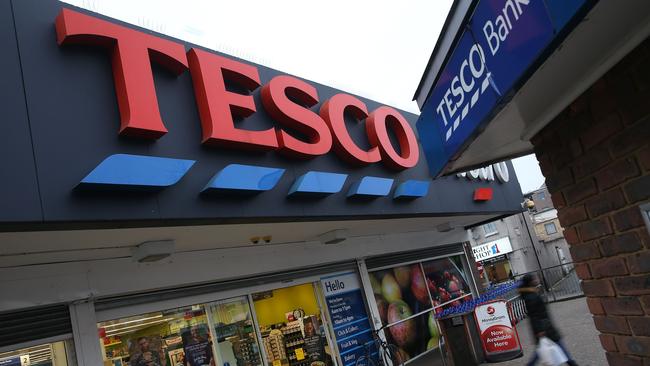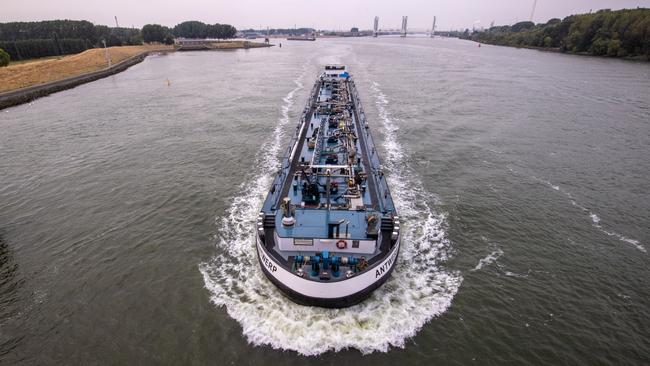How much will it cost to defeat inflation?
Signs of slowdown outside the US provide latest indicator of whether central banks have made the right decision on rates.

Central banks around the world appear to be nearing the end of a series of interest rate rises, but the economic cost of the battle against inflation is only beginning to emerge, with mounting signs that Europe could be among the hardest hit.
Adding to those signals were surveys released Friday suggesting that Europe’s economy contracted in the three months through September.
Many central banks have signalled that interest rates should now be high enough to bring inflation back down. Of the 12 central banks that announced policy decisions in the past five days, eight left their key interest rates unchanged, including the Federal Reserve and the Bank of England.
The recent rate rise campaign is unprecedented in its breadth, scale and speed. More policy makers have raised borrowing costs to a greater extent than in any previous period of similar duration.
Those rate rises were designed to slow demand and labour markets, and ultimately economic growth, in a bid to cool inflation. But their impact will be felt long after the last vote to raise rates has been cast, and the degree to which the jobs market and economic growth weaken will play a big part in determining how long central banks wait before they start cutting rates again.
Many have signalled that they are unlikely to cut their key rates until well into 2024 – or later – but that may change if economies slow more sharply than expected, a risk that appears greater in Europe than in the US
“Maybe the Fed has done too much, but Europe has chased the Fed to the point where the economy can’t live with this,” said Dario Perkins, an economist at T.S. Lombard.

The global economy cooled in the three months through June and there are few signs of a rebound outside the US.
While China’s economy has slowed, Europe’s economy appears most at risk of an outright contraction. It had just about weathered the impact of Russia’s invasion of Ukraine on energy and food costs as the anniversary of the start of the war passed, but the added headwind of higher interest rates may have been one challenge too many.
September’s surveys of European purchasing managers at manufacturers and service providers, released Friday, pointed to another month of decline in activity, suggesting that the region’s economy contracted in the three months through September.
The outlook also worsened, with new orders falling at the fastest pace since November 2020. The French economy has helped drive growth in the eurozone in the face of German stagnation, but it showed the deepest drop in activity during September. Hamburg Commercial Bank, which sponsors the survey, said it pointed to an annualised decline in GDP of around 1.6 per cent.
“Manufacturing has performed poorly for quite some time, but the fact that services are the main contributor to the drop in new orders shows that the weakening of demand in the eurozone is becoming more broadbased,” said Bert Colijn, an economist at ING Bank.
In the UK, the surveys of purchasing managers carried out by S&P Global pointed to the largest decline in activity since March 2009, if the months following the outbreak of the Covid-19 pandemic are excluded. Economists at JP Morgan said the surveys pointed to economic stagnation in the three months through September but also suggested there would be no pick-up in the final three months of the year, as they had previously expected.

By contrast, the surveys of purchasing managers pointed to a return to expansion in Australia and continued growth in Japan.
In the US, an S&P Global survey of purchasing managers pointed to continued strength in the labour market but a broader economy that is cooling after strong growth this summer. The survey’s employment component quickened to the fastest since May. But new orders dropped for both goods and services, and output stagnated as manufacturers and service providers saw muted demand and business confidence fell to a nine-month low.
Some central banks have continued to raise their key interest rates. In this month’s round of rate decisions, they included the European Central Bank and the central banks of Sweden and Norway. Economists expect those moves to be among their last.
However, consumer prices continue to rise very rapidly, if more slowly than in the second half of 2022, and job markets are still tight, with unemployment rates close to record lows in many rich countries. In acknowledgment, many central banks are indicating that they won’t soon follow Brazil’s lead in lowering their key interest rate.
“At a global level, headline inflation continues to moderate but food price inflation remains high, oil markets have tightened significantly and core inflation looks sticky,” said Lesetja Kganyago, governor of the South African Reserve Bank as he announced an unchanged interest rate Thursday. “Sticky inflation implies that average interest rates in major economies will remain high.”
Additional reporting: Austen Hufford
The Wall Street Journal






To join the conversation, please log in. Don't have an account? Register
Join the conversation, you are commenting as Logout